The Medlar Tree at the PumpHouse
Along with most Cambridge colleges the PumpHouse has its very own Medlar tree.
Mentioned by Shakespeare and Chaucer And D H Laurence, the term “open-ers” refers to the fruit of the medlar tree, which resembles a “small, brown-skinned apple.” Native to Greece and Italy, the medlar was considered a luxury. The fruit is not edible until it is somewhat fermented on the tree, through a controlled rotting called 'bletting.' Its unique cultivation process lends the medlar fruit to literature as a symbol for premature destitution or luxury
Most Cambridge colleges have one from many years ago Kettle’s Yard art gallery in Cambridge has two from which they make jelly. These trees gnarled and bare in deep winter but transformed between spring and autumn by green then burnt orange leaves, bright blossom and unusual brown fruit,
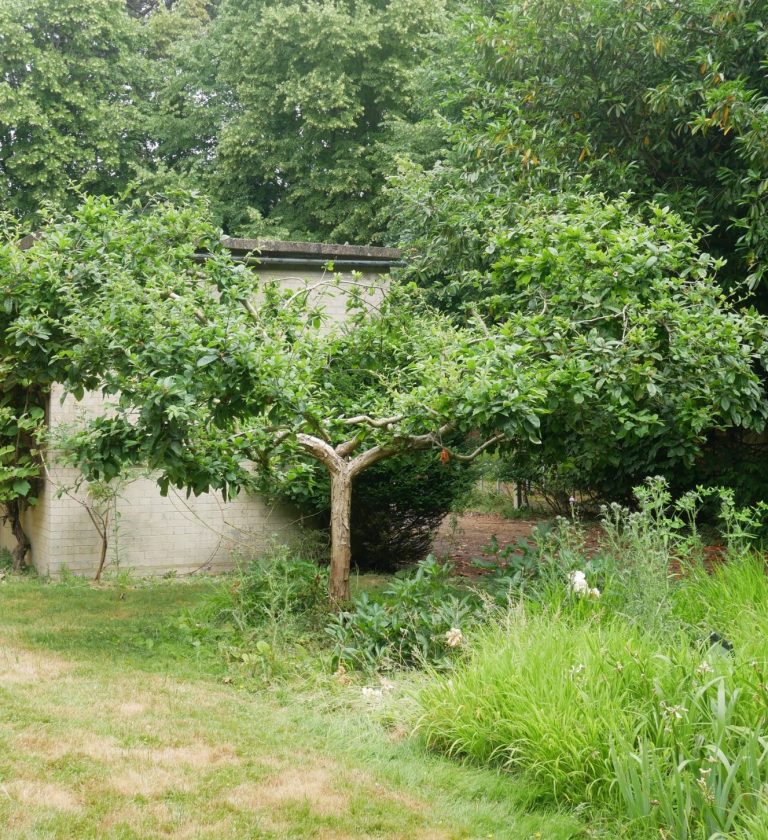
mar
2020

Fulbourn Old Works
Telford House, Cow Lane, Fulbourn
Telford House was built between 1888 and 1890 by the Cambridge University and Town Waterworks Company. The building was designed by Charles Hawksley to house steam driven pumping equipment as part of the Company’s supply system for the City (then Borough) of Cambridge. The pumping equipment supplied drinking water for Cambridge from 1890 to 1921, 1938 to 1945 and 1954 to 1988. During this time it was known as “Fulbourn Old Works”. The building was acquired in 1990 by Hannah Reed Associates and converted to offices.
The Cambridge University and Town Waterworks Company
The Cambridge University and Town Waterworks Company was formed in1853 to supply drinking water to the Borough of Cambridge. By 1883 demand for water had almost exceeded supply which, at the time, was provided by pumping works at Cherry Hinton and a covered reservoir on Lime Kiln Hill. In that year the Company’s Engineer, Henry Tomlinson, died and the Board appointed Thomas Hawksley, a consultant as engineer.
Thomas Hawksley
Thomas Hawksley was the pre-eminent water engineer of the Victorian era. Born in 1807, in 1831 he was appointed engineer to the Nottingham Water Company where he designed the first constant pressure water supply system. The valves he designed for the distribution system and domestic premises are still, with minor changes, in use today. He was instrumental in the design of water supply systems for dozens of towns and cities in Britain and overseas. Thomas was president of the Institution of Civil Engineers in 1871.
Charles Hawksley
Thomas Hawksley took his son Charles into partnership in 1866 and he undertook much of the detailed work on the Fulbourn pumping station. The building bears his hallmark “ecclesiastical” style. Charles was president of the Institution of Civil Engineers in 1901.
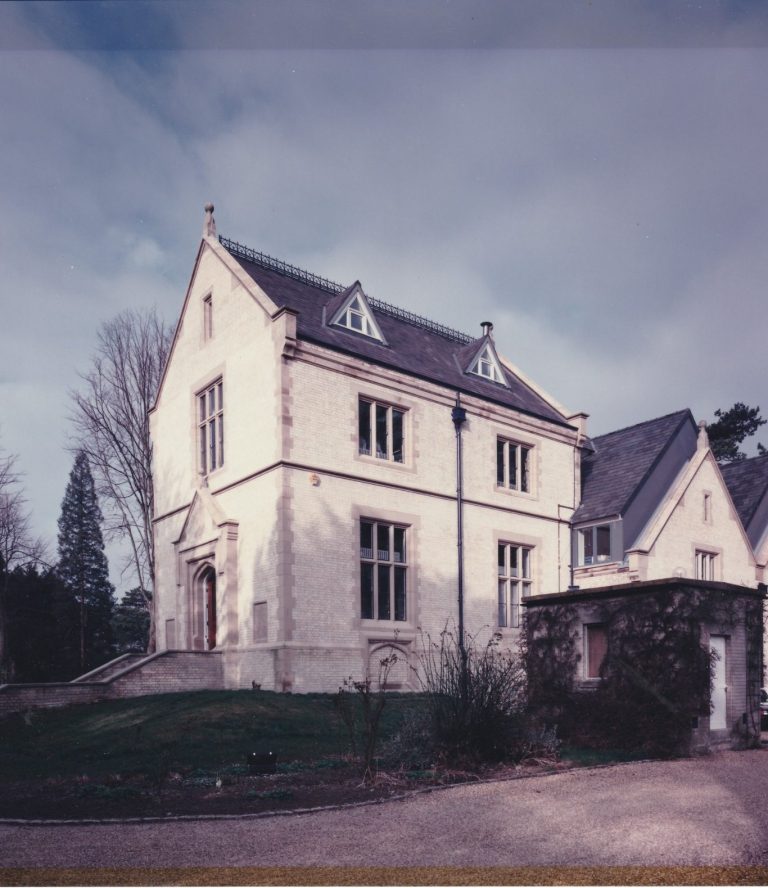
1883

The 1886 Cambridge University and Town Waterworks Act. The Horse Pond.
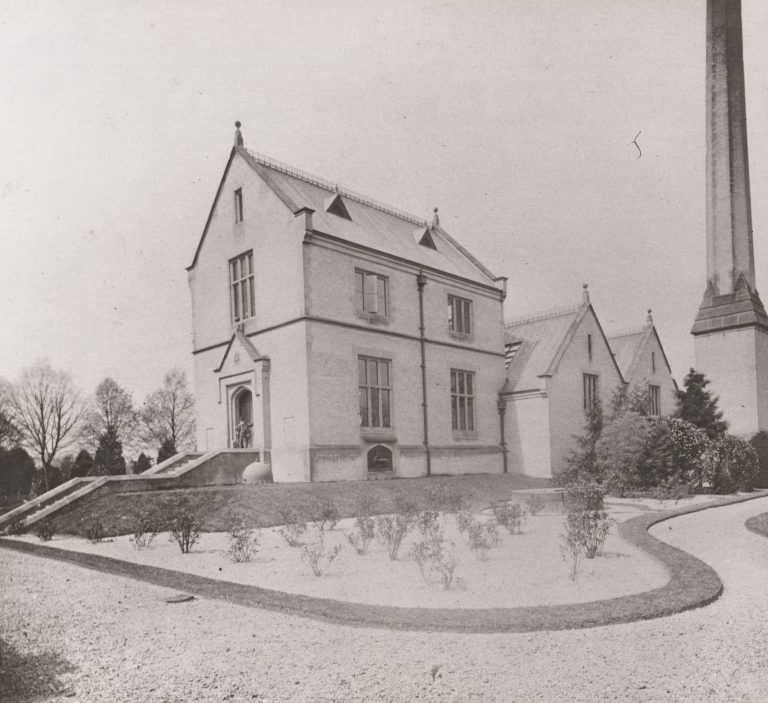
Why this site for the new waterworks?
Why this site for the new waterworks?
A short distance to the East of Telford House is an area of wetland with a spring known as “Poor Well”. Tenant farmers would wash their carts and cattle on this site and the presence of the spring indicated that a well sunk in the vicinity would yield a plentiful supply. In 1885 the water company purchased the field at the corner of Teversham Road and Cow Lane for the construction of the new waterworks.
The 1886 Cambridge University and Town Waterworks Act. The Horse Pond.
As a “statutory” Company parliament’s approval was needed to increase its capital base and to proceed with new works. The main issues considered before passing the 1886 Act concerned the need for the new works and the effect on the immediate community, in particular access to water from local sources. While the need for water in Cambridge was clear it was necessary to make provision to mitigate any reduction in the flow from the spring at Poor Well and the Fulbourn parish pumps.
The Act provided for a pond to be constructed, and kept supplied, adjacent to Cow Lane, close to Poor Well, for the washing of carts and stock. In addition, 8 standposts supplied from the new works were to be constructed for general use. The “Horse Pond” remains together with one of the Hawksley designed standposts.
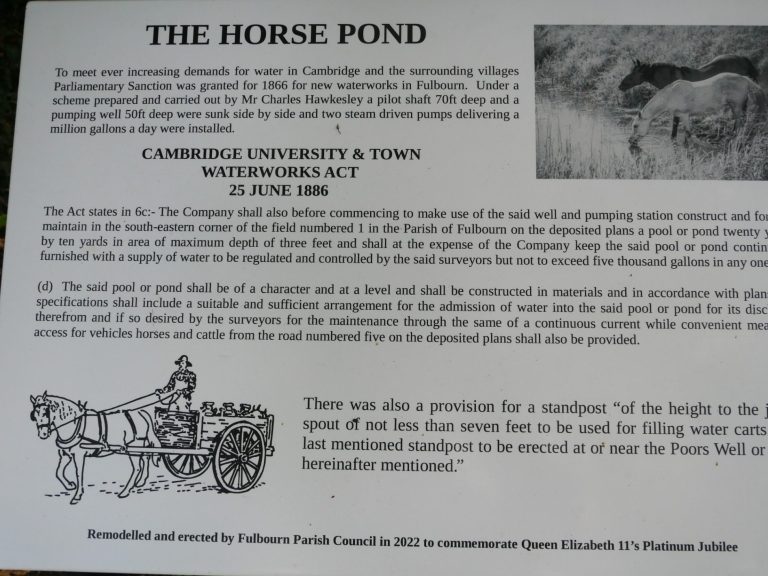
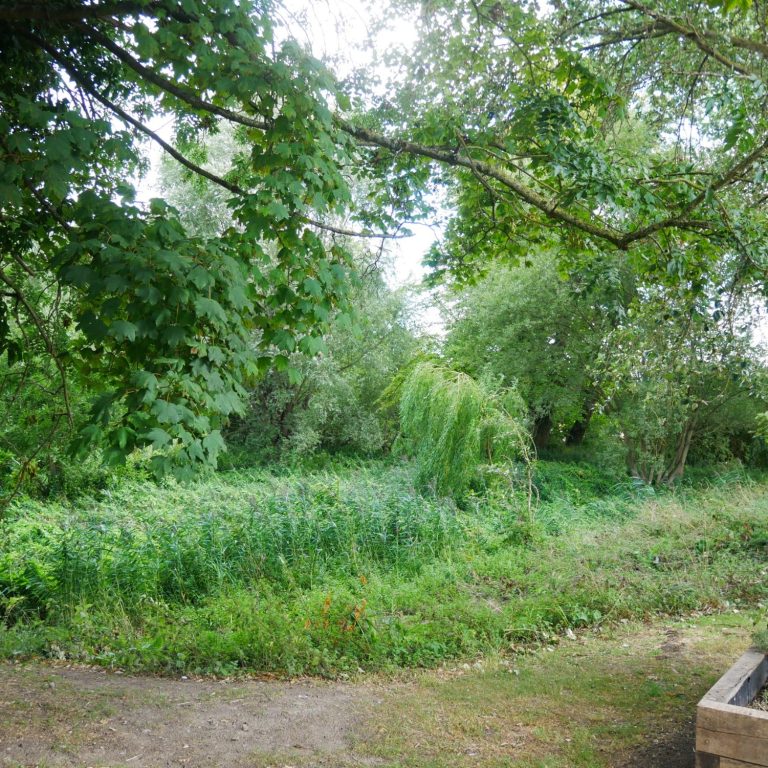
Tagline
1888 – 1890 Construction
The works were constructed over a 2 year period and consisted of the following:
- A pilot borehole to depth of 70 feet
- An elliptical well to a depth of 50 feet
- The buildings to house the steam pumping plant, boiler house, chimney
- The pumping plant supplied by The Lilleshall Iron Company
- A cooling pond to the west of the buildings to recirculate the water from the boilers
- A house at the junction of Cow Lane and Teversham Road to house the works caretaker and a Boardroom for the company directors
*Apart from the chimney and the pumping plant all these elements still exist although the well was filled in in or around 1990.
Water from the works was first delivered in March 1891.
